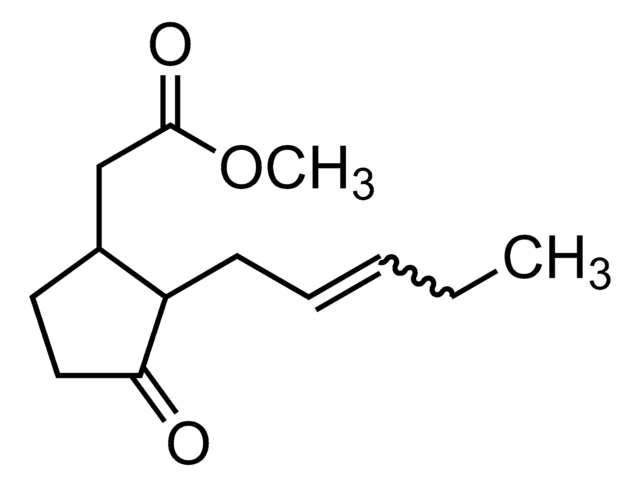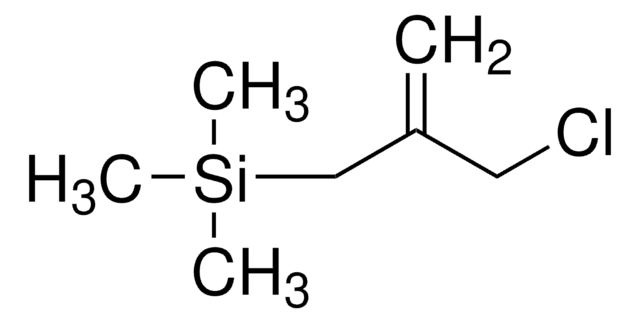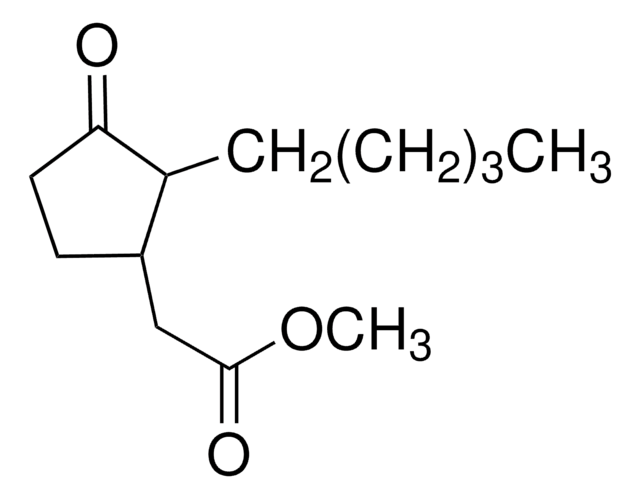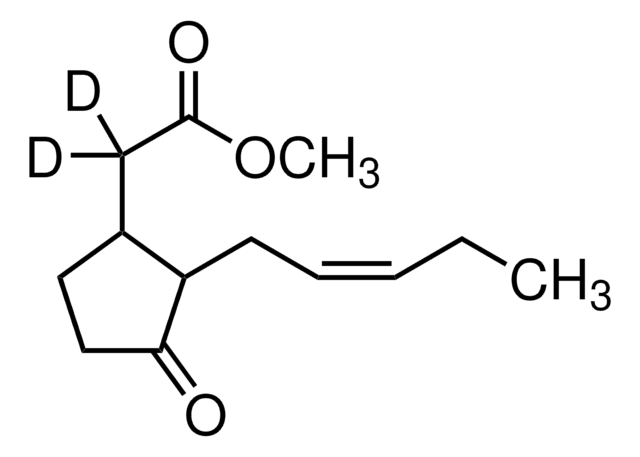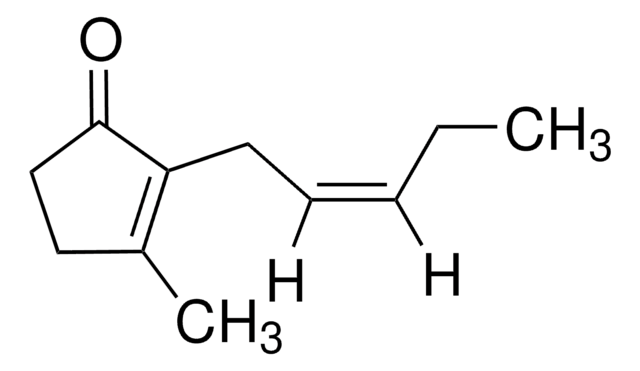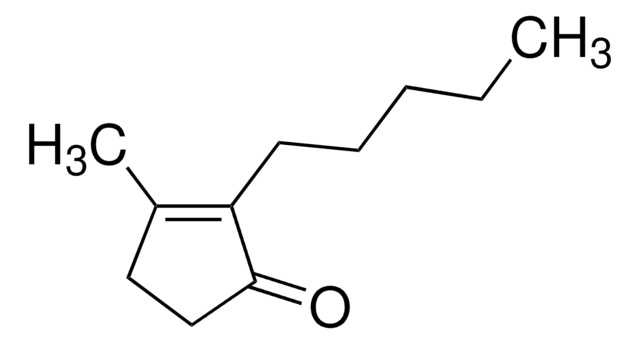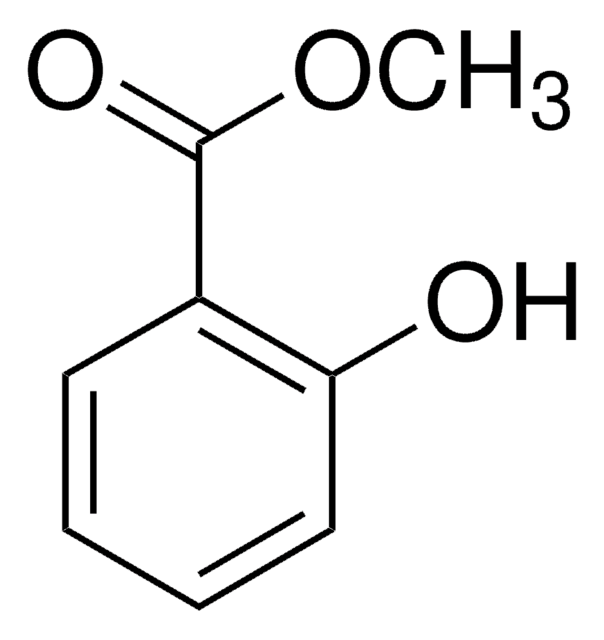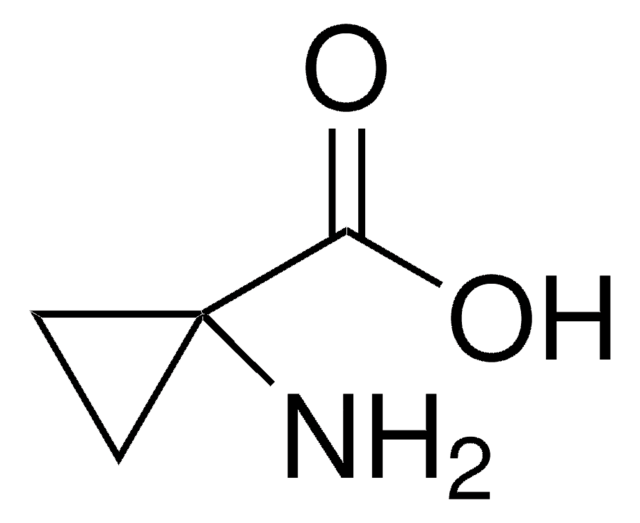392707
Methyl jasmonate
95%
Sinónimos:
3-Oxo-2-(2-pentenyl)cyclopentaneacetic acid, methyl ester, Methyl 3-oxo-2-(2-pentenyl)cyclopentaneacetate
About This Item
Productos recomendados
Quality Level
assay
95%
form
liquid
contains
Synthetic α-tocopherol as stabilizer
refractive index
n20/D 1.474 (lit.)
bp
110 °C/0.2 mmHg (lit.)
solubility
water: soluble 340 mg/L at 25 °C(lit.)
density
1.03 g/mL at 25 °C (lit.)
SMILES string
CC\C=C\CC1C(CCC1=O)CC(=O)OC
InChI
1S/C13H20O3/c1-3-4-5-6-11-10(7-8-12(11)14)9-13(15)16-2/h4-5,10-11H,3,6-9H2,1-2H3/b5-4+
InChI key
GEWDNTWNSAZUDX-SNAWJCMRSA-N
¿Está buscando productos similares? Visita Guía de comparación de productos
Categorías relacionadas
General description
Application
Methyl jasmonate may be used in the following studies:
- As a potential anti-cancer agent that shows selective cytotoxic effect towards cancer cells.
- To induce the defensive proteinase inhibitor proteins synthesis in plant leaves.
- As an elicitor to enrich the total anthocyanin content (TAC) in radish sprouts.
- As an elicitor in inducing the biosynthesis of trans-resveratrol, a plant phenol in Vitis vinifera cv. Negramaro cell cultures.
- As a mediator of extensive plant transcriptome reprogramming/ remodeling on exogenous treatment to Salvia sclarea leaves.
- As a modulator in the expression of chalcone synthase (chs) and proline-rich cell wall protein (PRP), two wound-responsive genes in soybean suspension cultures.
- As a starting material in the synthesis of [13C,2H3]-MeJA, an internal standard used in the quantitative determination of MeJA in plant tissues.
- As a test compound in the application of reduced graphene oxide–poly(safranine T) film on glassy carbon electrode (rGO–PST/GCE) in the electrochemical determination of MeJA in jasmine essential oil.
Storage Class
10 - Combustible liquids
wgk_germany
WGK 2
flash_point_f
>235.4 °F - closed cup
flash_point_c
> 113 °C - closed cup
Elija entre una de las versiones más recientes:
¿Ya tiene este producto?
Encuentre la documentación para los productos que ha comprado recientemente en la Biblioteca de documentos.
Los clientes también vieron
Nuestro equipo de científicos tiene experiencia en todas las áreas de investigación: Ciencias de la vida, Ciencia de los materiales, Síntesis química, Cromatografía, Analítica y muchas otras.
Póngase en contacto con el Servicio técnico